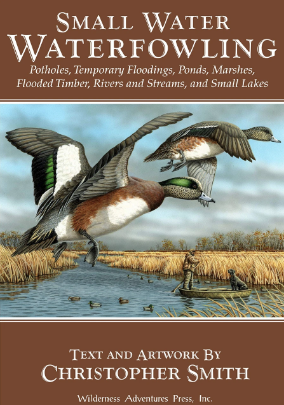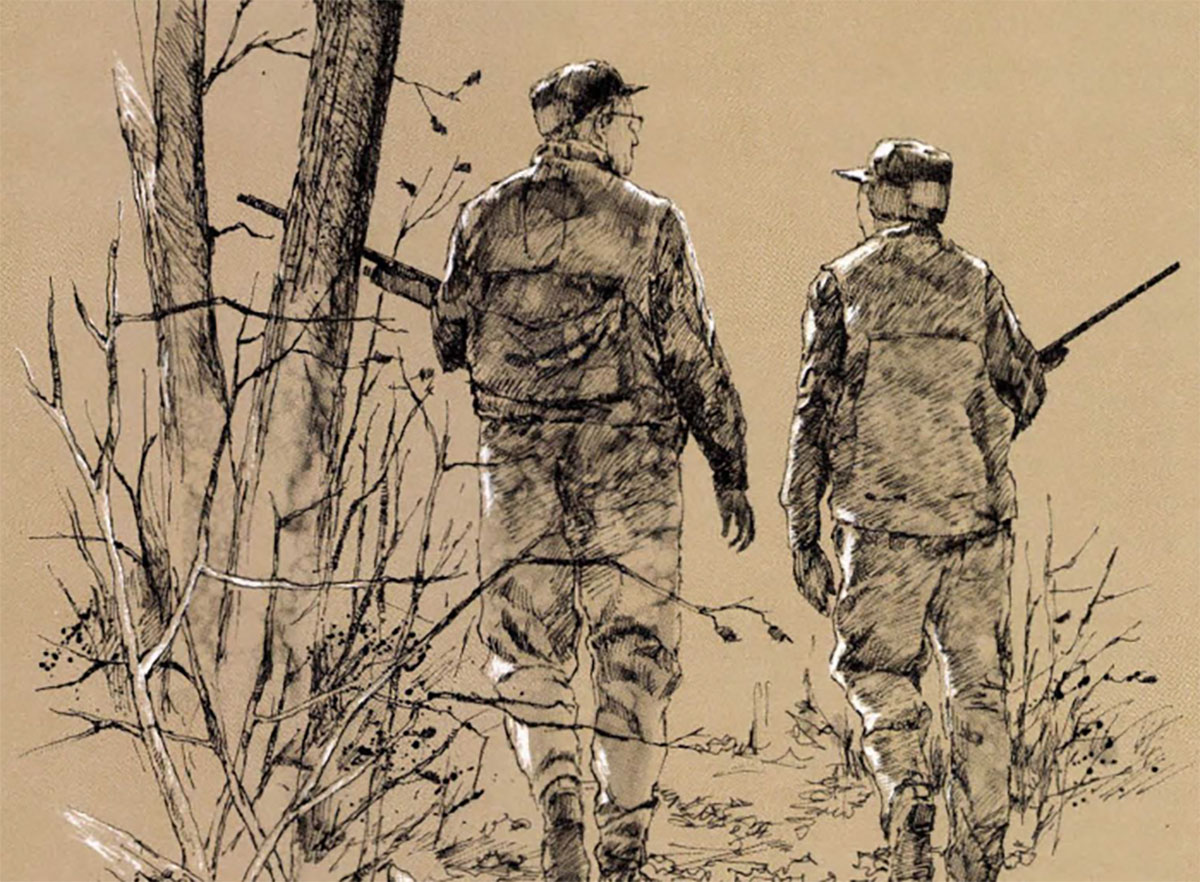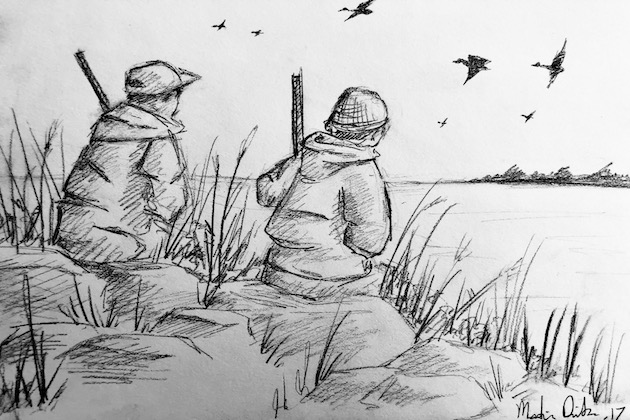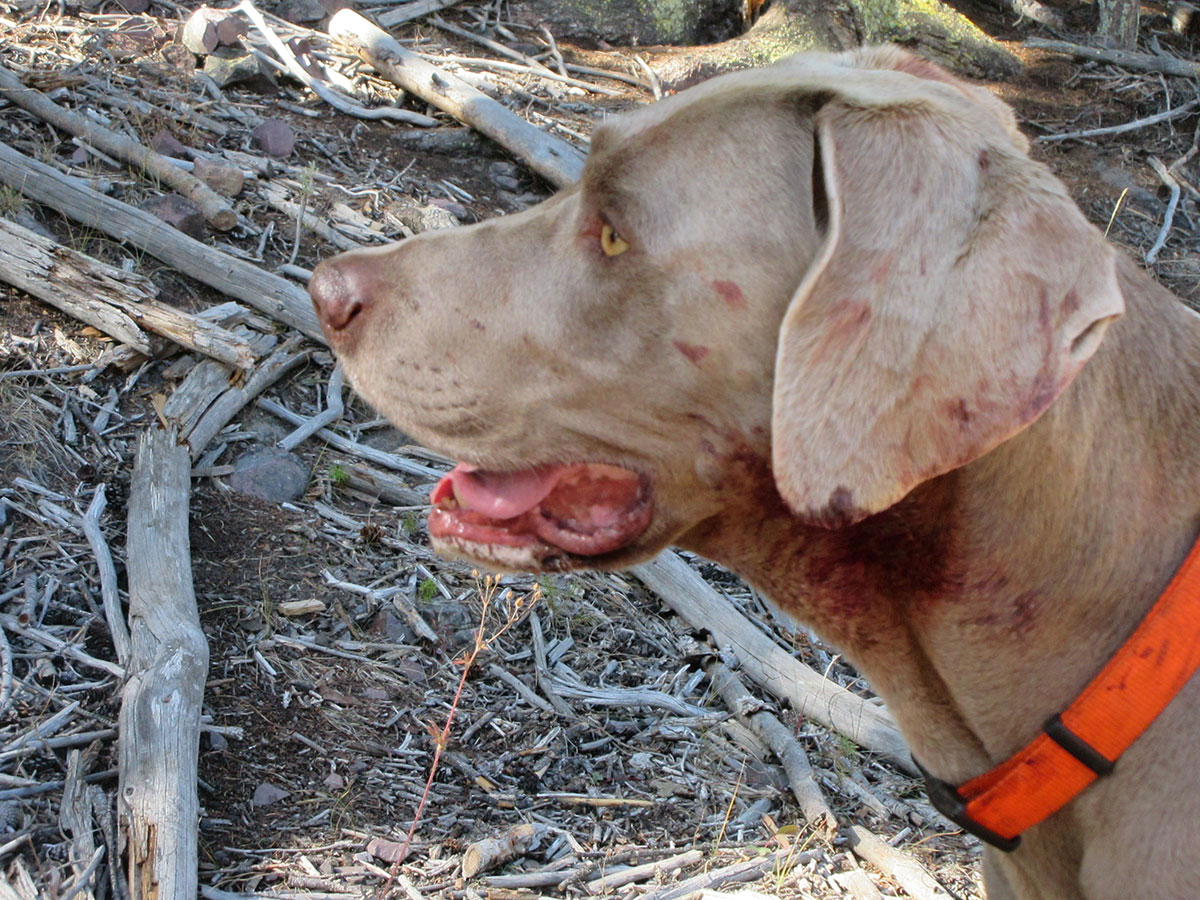The busts accumulated in earnest while he relearned the lessons lost during a decade away from the goose blind.
Dawn had come and gone but the geese still squabbled from the roost, holding tight to a small pond tucked into the rolling topography of central Wisconsin and waiting for conditions to improve. The surly fog that kept them grounded also blanketed the corn stubble and turned my spread of decoys into a mere apparition.
The previous morning an army of honkers had swarmed this field, which belonged to a local dairy farmer. Permission to hunt had not come without a price – a solid hour of discourse in the pungent confines of the milking parlor. But it had been worth it, and as I waited, hidden amongst an eclectic array of shell and full-body decoys, I could not see the farm through the incorrigible fog, but I could certainly smell it.
A decade had transpired since I had last hunted geese, a self-imposed moratorium prompted by the escalating obligations of life. As an unfettered twenty-something, I couldn’t foresee a time when chasing geese wouldn’t be a regular facet of autumn. But over the last decade my young daughters had used the decoys far more than I had, deploying them as lawn ornaments, posing them as part of some elaborate scheme unfolding in their vivid imaginations.
During the early stanzas of my reunion tour, I would find that some things had not changed. I was still an accomplished hack with a goose call and my aim had remained hopelessly crooked. While the morning fog would eventually lift, I found difficulty shedding the rust of semi-retirement.
Patches of blue sky and sunlight finally prompted the geese to take flight, and I watched the entire feathered armada sail overhead and systematically shun my woeful attempt at deception. The brilliant sheen of condensation emanating from the decoys provided an easy tell.
My frustration lingered but temporarily dissipated a few mornings later when a disorganized mob of seven geese began their descent in the general vicinity of my spread. The birds angled wide right when I sprung from the blind. I fired confidently, aiming well ahead of the lead bird, only to watch the fourth in line drop a leg and lose altitude. I swore but held out some tendril of hope as the bird sank lower. The bird, however, regained composure and altitude and disappeared over and beyond the distant tree line. I packed up early, disgusted with my errant volley.
Everything seemed to conspire against me in the days ahead, and I stumbled through the same hard lessons that humbled me during my first goose hunting experiences years earlier. I remembered that a Canada goose is the feathered equivalent of a B-52, appearing magnificently slow and deliberate, all the while clipping along at 30 miles per hour while wearing a coat of feathers that easily repels steel shot at long range. And patience is always the order of the day, and it’s always best to pull the trigger when webbed toes were tickling the stubble.
Another morning, a pair of birds dropped into the decoys as I walked to the truck, a flagrant reminder that flight schedules were subject to change without notice. I relearned that reconnaissance gathered on Thursday morning has little to do with Saturday.
I began to get off my ample posterior and rearrange my spread for slight changes in wind direction, and I did my level best to make the blind disappear and began to avoid those places where I could not do so. And there were numerous times (probably always) when I should have conveniently misplaced my call and just let the birds do their thing, rather than continually advertise my exact location.
The busts accumulated at a steady pace. My family wondered if I was napping on these early morning excursions. I returned with only the decoys – and sometimes they weren’t intact. There’s still a stray head out there in the corn stubble somewhere.
Eventually, a lone bird committed suicide and I felled a bird here and there, but killing a two-bird limit continued to elude me. Just once I wanted to pick up the decoys because I had to, then head to the house with no empty slots to fill. But things got busy for a spell and scouting had yielded nothing but denials from landowners.
Before work one Friday, however, my youngest daughter and I took a spin around the country block. The first frost of the season glittered in the low spots as the sun peeked over the eastern horizon. Geese were back in that same field where I had started the season. We stopped to chat with the farmer, well after the morning milk had been extracted. “Get ’em all,” he said as we drove off. Well, I’d try for two anyway.
The ensuing dawn broke unblemished and the action started early, with straggling lines of geese flying high and well to the west. These were not my birds, but I watched intently, making mental notes regarding their itinerary. A flock of turkeys flew down from the little woods to the north and waddled off to feast on freeze-burned grasshoppers. The geese roosting on the little pond over the hill grew restless and started to wander off in flocks of a dozen or so.
Finally, a small flock showed interest, and I cowered in the blind, barely clucking on the call. They swung wide over the farm and got right with the wind and descended. I dumped the call and waited, heart thumping. The first bird may have landed on the blind had I not popped up and killed it clean, the solid thud of goose against terra firma confirmed a true aim.
Birds wheeled overhead and backpedaled in mass confusion. I felt tempted to make another play, but they flew a smidge high and flew hard at all the wrong angles. Stragglers banded together in ragged clusters that were both poorly acquainted and tentative. I tallied the missed opportunities as the hiatus began in earnest, but a pair of honkers made an errant left turn and lagged behind the exodus.
The tandem hovered, mired in uncertainty. Their final assessment of risk proved fatally flawed as the two birds promptly cupped their wings and touched down in the middle of my spread, 30 yards from my boots. I let them sit for a count of three and reminded myself to aim small. I quietly sat up in the blind, and the startled birds bolted from the stubble in a flail of frantic wingbeats. They gained altitude, but when the gun bucked, a single disheveled bird returned to earth. My day was done. Time to get the truck and make a few pictures – a pair of geese placed on the open tailgate of an old Chevy pickup, mud-smeared decoys spilling from the truck bed, the entire scene drenched in pure Wisconsin sunshine.
I’d repeat the performance the next morning, neatly folding a pair of birds from the first flock to buzz the spread at low altitude. The season continued to unfold, and while I often struggled with the finer points of the subject matter, somewhere along the way I’d found the WD40. The rust was all but gone and a measure of redemption was mine.
 When it comes to actually shooting ducks and geese over water, the action is on the small places – the inland lakes, the ponds and potholes, the floodings and creeks and backwaters. Day in and day out, that’s where the ducks are, and that’s where Chris Smith takes you.
When it comes to actually shooting ducks and geese over water, the action is on the small places – the inland lakes, the ponds and potholes, the floodings and creeks and backwaters. Day in and day out, that’s where the ducks are, and that’s where Chris Smith takes you.
However, each of these places requires a separate technique, alternate decoys spreads and calling concepts, and different gear to use. He tells you how to approach each type of hunting for the weather and conditions. He knows when and when not to call. He describes the skills a good waterfowl dog needs to know for each place, things he’s taught his succession of Labrador retrievers over the years. In all, this is one of the finest treatises on waterfowling to come out in years—because small water means big sport. Buy Now




